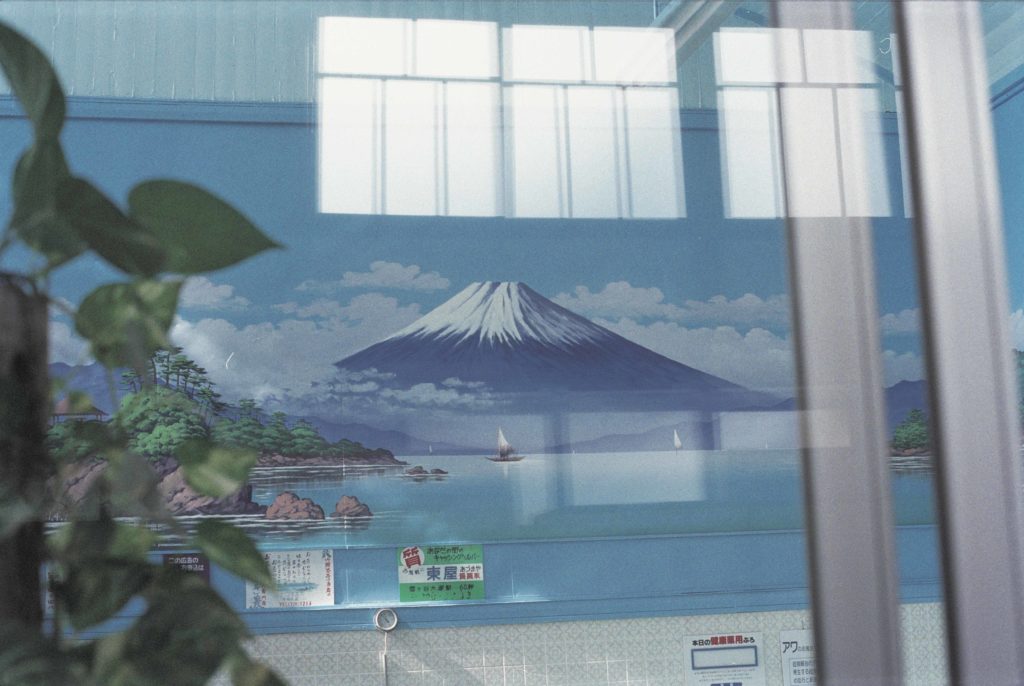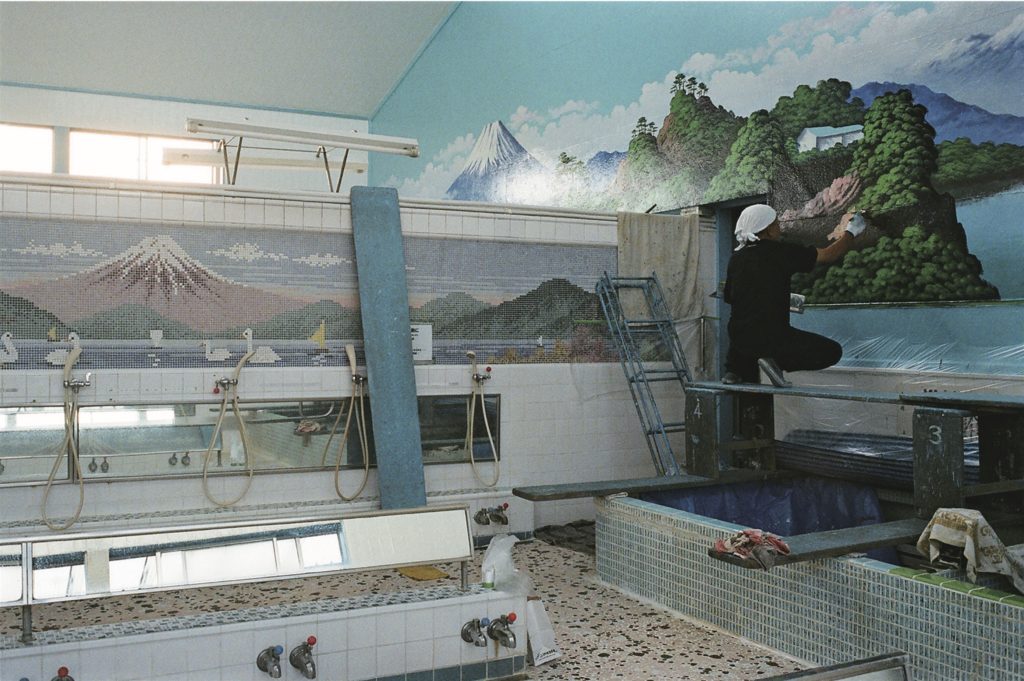
Story 02 | Painting the Holy Mountain
Kiyoto Maruyama is one of two remaining ‘Penki-eshi’ (Sento painters) in Tokyo. Today he is painting the back wall of Fujino-yu, but as we arrive he climbs down from the scaffolding, walks through the coffee cans and paint tins to sit down in front of us. His track-pants and slip on canvas shoes are coated in a dense patina of blue and white paint and behind his seated silhouette, today’s wet, half finished portrait of Mt. Fuji is drying in the afternoon sunlight.
“Sometimes they request that I paint in the middle, for both baths”, Maruyama gestures to the wall space above the partition between male and female baths, “but I don’t like that because then I will have to paint the mountain much bigger. Big mountains are scary”.
Sento painting, today is neither lucrative nor easy and Maruyama is lucky to paint five Sento a month these days. Compared to the ‘70s when he was painting daily. He turns to look at his equipment, “these days young people don’t have the concentration or patience to become good at something like this. After Nakajima and his assistant there will be no more Sento painters. It is sad”. Penki-eshi didn’t always paint the holy mountain. There was a time when most Sento’s wanted “Mickey Mouse, Gundam, and Doraemon” says Maruyama, almost farming a frown, “I really didn’t like it”. Looking back to the mountain he jokes “I once tried to paint a castle, but it transformed into Fuji. You can cheat on other mountains, but you can’t cheat on Fuji”.
The goal when painting Mt. Fuji is to let the bathers feel as though they are bathing in sacred waters flowing directly from the holy mountain itself. This spiritual illusion is deeply respected and there are certain rules about what can not be painted. Fuji must never be painted at sunset nor bathed in red sunlight, due to associations with blood and death. Water is also where individual style becomes clear; compared to Nakajima’s fierce sea and towering ocean spray, Maruyama’s waters are perfectly calm, almost transcendently so. Echoing the same calm tone as his waters, Maruyama glows with happy equanimity despite standing at the end of an era.
< From Papersky no.31(2010) >












